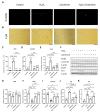Colchicine prevents oxidative stress-induced endothelial cell senescence via blocking NF-κB and MAPKs: implications in vascular diseases
- PMID: 38001470
- PMCID: PMC10675905
- DOI: 10.1186/s12950-023-00366-7
Colchicine prevents oxidative stress-induced endothelial cell senescence via blocking NF-κB and MAPKs: implications in vascular diseases
Abstract
Background: Smoking, alcohol abuse, and hypertension are - among others, potential risk factors for cardiovascular diseases. These risk factors generate oxidative stress and cause oxidative stress-induced DNA damage, resulting in cellular senescence and senescence-associated secretory phenotype (SASP). The SASP factors in feed-forward response exacerbate inflammation and cause tissue remodeling, resulting in atherosclerotic plaque formation and rupture.
Results: Colchicine inhibited ROS generation and mitigated oxidative stress-induced DNA damage. It dampened oxidative stress-induced endothelial cell senescence and improved the expression of DNA repair protein KU80 and aging marker Lamin B1. The drug attenuated the expression of senescence marker P21 at mRNA and protein levels. The pathway analysis showed that colchicine inhibited NF-κB and MAPKs pathways and subdued mTOR activation. Colchicine also attenuated mRNA expression of interleukin (IL)-1β, IL-6, IL-8, MCP-1, ICAM-1, and E-selectin. Furthermore, colchicine reduced the mRNA and protein expression of matrix metalloproteinase (MMP-2).
Conclusion: In summary, colchicine blocked oxidative stress-induced senescence and SASP by inhibiting the activation of NF-κB and MAPKs pathways.
Keywords: Cellular senescence; Colchicine; Endothelial cells; Inflammation; MAPKs; NFκ-B; Oxidative stress; mTOR.
© 2023. The Author(s).
Conflict of interest statement
The authors declare no competing interests.
Figures





Similar articles
-
mTOR Inhibitor Rapalink-1 Prevents Ethanol-Induced Senescence in Endothelial Cells.Cells. 2023 Nov 11;12(22):2609. doi: 10.3390/cells12222609. Cells. 2023. PMID: 37998344 Free PMC article.
-
Colchicine Protects against Ethanol-Induced Senescence and Senescence-Associated Secretory Phenotype in Endothelial Cells.Antioxidants (Basel). 2023 Apr 19;12(4):960. doi: 10.3390/antiox12040960. Antioxidants (Basel). 2023. PMID: 37107335 Free PMC article.
-
Tobacco smoke condensate-induced senescence in endothelial cells was ameliorated by colchicine treatment via suppression of NF-κB and MAPKs P38 and ERK pathways activation.Cell Commun Signal. 2024 Apr 3;22(1):214. doi: 10.1186/s12964-024-01594-x. Cell Commun Signal. 2024. PMID: 38570838 Free PMC article.
-
Emerging role of NF-κB signaling in the induction of senescence-associated secretory phenotype (SASP).Cell Signal. 2012 Apr;24(4):835-45. doi: 10.1016/j.cellsig.2011.12.006. Epub 2011 Dec 11. Cell Signal. 2012. PMID: 22182507 Review.
-
Cellular and molecular biology of aging endothelial cells.J Mol Cell Cardiol. 2015 Dec;89(Pt B):122-35. doi: 10.1016/j.yjmcc.2015.01.021. Epub 2015 Feb 2. J Mol Cell Cardiol. 2015. PMID: 25655936 Free PMC article. Review.
Cited by
-
Long-Lasting Recovery From Recurrent Brain Radionecrosis Following TRICO Treatment in 2 Head and Neck Cancer Survivors.Adv Radiat Oncol. 2025 Apr 7;10(6):101785. doi: 10.1016/j.adro.2025.101785. eCollection 2025 Jun. Adv Radiat Oncol. 2025. PMID: 40486288 Free PMC article. No abstract available.
-
Neutrophils extracellular traps myeloperoxidase and elastase predict cerebral vasospasms after aneurysmal subarachnoid hemorrhage.Heliyon. 2024 Nov 20;10(23):e40562. doi: 10.1016/j.heliyon.2024.e40562. eCollection 2024 Dec 15. Heliyon. 2024. PMID: 39654759 Free PMC article.
-
Current Mouse Models of Intracranial Aneurysms: Analysis of Pharmacological Agents Used to Induce Aneurysms and Their Impact on Translational Research.J Am Heart Assoc. 2024 Feb 6;13(3):e031811. doi: 10.1161/JAHA.123.031811. Epub 2024 Jan 23. J Am Heart Assoc. 2024. PMID: 38258667 Free PMC article. Review.
-
[Colchicine-Phoenix from the ashes].Wien Klin Wochenschr. 2025 Feb;137(Suppl 1):1-33. doi: 10.1007/s00508-024-02490-7. Epub 2025 Feb 6. Wien Klin Wochenschr. 2025. PMID: 39912853 Free PMC article. Review. German.
-
Delivery Strategies for Colchicine as a Critical Dose Drug: Reducing Toxicity and Enhancing Efficacy.Pharmaceutics. 2024 Feb 3;16(2):222. doi: 10.3390/pharmaceutics16020222. Pharmaceutics. 2024. PMID: 38399276 Free PMC article. Review.
References
LinkOut - more resources
Full Text Sources
Research Materials
Miscellaneous

